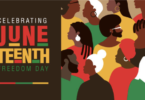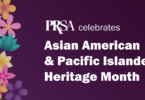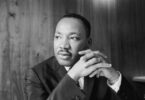Having attended Black History Month events during February and listening to a variety of African-American leaders and friends in the PR industry, I came away feeling both inspired by them, and not at all satisfied with the state of Diversity and Inclusion in PR and in PRSA. I’m referring to D&I in all its facets: race, ethnicity, gender, religious beliefs, nationality, age, sexual orientation, physical and mental ability, and more.
What was reinforced for me was that Diversity and Inclusion is a professional imperative for public relations, a profession that must strategically engage all stakeholders to achieve successful outcomes — or become irrelevant. To make progress we have to move past talking about D&I and acting intermittently, and commit to a multigenerational marathon with settled intention.
I’m positive that we can and must act, having seen PRWeek’s mini-documentary, “What It’s Like to Be Black in PR,” featuring such leaders as my Board colleague Andrew McCaskill, APR, a senior vice president at Nielsen. I was also moved by the Museum of PR’s third annual Black History Month event on Feb. 1 in New York City, where I learned more about Frederick Douglass’ pivotal place in American history from his great-great-great grandson Kenneth Morris Jr., who now continues his ancestor’s work as president of Frederick Douglass Family Initiatives.
Mr. Morris was joined by a variety of African-American PR leaders, including Dr. Rochelle Ford, APR, and the Rev. Dr. Unnia Pettus, who edited and were signing copies of “Ofield: The Autobiography of Public Relations Man Ofield Dukes,” the legendary PRSA Gold Anvil recipient and driving force behind establishing the Martin Luther King national holiday, among other momentous achievements. It should be required reading for PR people so that we develop a broader and deeper understanding of why D&I isn’t optional for us in a rapidly advancing world.
I’m concerned that the PR profession and PRSA aren’t advancing fast enough. The U.S. Census estimates that 14.5 percent of the nation’s population is black. At our National Assembly in October, there was one black person in a room of perhaps 250 delegates — Andrew McCaskill — and far too few others representing racial and ethnic minorities. What can our profession and PRSA do about that?
We can employ the strategies of our own profession, to involve people in the decisions that affect them and to enable progress by inclusion. I’m encouraged by the work of our national Diversity and Inclusion Committee, led by Chair James Shackelford and Immediate Past Chair Ana Toro, APR, Fellow PRSA, which has established a network of 64 D&I chairs (so far) among our 110 Chapters to empower grassroots efforts while preparing for new national initiatives. One of these will be a State of Diversity panel discussion to be hosted in New York on June 22. The Committee is also considering new ways to spotlight D&I at our International Conference and through recognition programs.
Our PRSA Foundation, led by President Judith Harrison, senior vice president, diversity and inclusion, at Weber Shandwick, and President-Elect Joe Cohen, APR, chief communications officer for AXIS Capital, has made advancing D&I its core mission, funding scholarships to attract and promote candidates of diverse backgrounds in our field. Our PRSA Board has committed $500,000 over five years to support the Foundation’s work. Last year, the Foundation allocated $20,000 in travel grants for minority students to attend the PRSSA National Convention. Stay tuned for more developments.
Diversity and Inclusion is a priority within your Society’s three-year strategic plan, and our Board and staff leaders keep it always before us as a guide to our actions. This year, in addition to our leadership coordinating more closely with the work of the PRSA Foundation, Felicia Blow, APR, associate vice president of development at Hampton University, will serve as special counsel to our Board, with a focus on PRSA’s membership recruitment and retention. She will bring her considerable skills, insights and perspective to the National Membership Committee, chaired by Sonja Popp-Stahly, APR, Fellow PRSA.
Students are certainly among our most important constituencies, and Jeneen Garcia, executive director of PRSSA, has committed to outreach and growth targets in recruiting students at Historically Black Colleges and Universities to PRSSA membership, and we are tracking progress systematically on a strategic dashboard for our staff and Board.
I’m also grateful to Dr. Denise Hill, APR, assistant professor of strategic communication at Elon University following a distinguished corporate career, who has agreed to serve as one of my appointees to the National Nominating Committee so that this critically important group benefits from the participation of a recognized thought leader on D&I.
Real work proceeds, and much remains. PR and PRSA must persevere in D&I to change as quickly as the world around us, or we’ll become the lesser for it. It’s often said that “diversity is being invited to the party; inclusion is being asked to dance.” OK, PRSA: Let’s dance. Now.
Anthony D’Angelo, APR, Fellow PRSA, is the 2018 chair of PRSA.







As an African American who has dedicated my life to public relations PRSA has continuously been a disappointment as it pertains to matters concerning diversity and inclusion. Thank you for this article. It is my hope we will wake up …
Agreed.
When I joined PRSA back in the dark ages (early 1980s) and attended my first chapter luncheon, I was astounded at the number of “very senior” white gentlemen in the room. It was a Boys’ Club, and my arrival was not expected or welcome. As a young white female, I huddled with other young white females at a table in the back of the room. We felt every bit of the separateness and exclusion. It wouldn’t have mattered who was in the room if our presence had been welcomed, recognized and embraced. There was nothing said overtly; no one was rude or angry, but they didn’t have to be. The collective response was, “Were going to ignore you, pretend you aren’t here, hope you go away don’t come back.” It’s the micro-inequities that are so hard to name yet are so damaging.
Change was coming, but it took several more years before women began to have a prominent representation at those luncheons and within PRSA in general. But we, as an organization, did not encourage or push for that change. It happened organically only because more women began majoring in subjects tied to the various disciplines within PR, and because companies were seeking to hire more professional women. It was a shift — an evolution, not a revolution.
Unfortunately, I have always found PRSA to be a difficult organization to navigate, to feel included and recognized and welcomed, just about anywhere within its structure or people. We silently allow cliques to form, subjective judgments to be made and long-held biases to cloud decisions. Whether it’s based on a regional/chapter thing, a gender thing, a race thing, a popularity/political thing, an introvert/extrovert thing, an APR/non-APR thing, a seniority thing or whatever else — I’ve seen just about every aspect of exclusion and separateness through the years, particularly during the many times I served as an Assembly Delegate.
We’ve talked about D&I for years, but to this day I have not seen anything fundamentally change. We are not an inclusive professional organization and never have been. It’s time we do some soul searching …
How would you like to help?
I’ve joined the D&I Committee, so hoping to see change through this mechanism. I’m just stating my perspective at this point — much work is still to be done.
Thanks for engaging. Couldn’t agree more about the work that remains.
Thank you! Almost 20 years ago when I attended my first PRSA luncheon, I had an oh-too-similar experience, Chris. We have a LONG way to go, and frankly, it’s frustrating. The only real change I have seen in the past two decades is now I see many more white women (vs. men) but we NEED diversity and inclusion in order to be better communicators and professionals!
In addition, I had the same experience once I rose to the local Board and served as Assembly Delegate–feeling like an outsider as a non-APR professional. Disheartening.
Having said all that, it IS good to hear similar rumblings coming from the top. Thank you, Anthony!
As a PRSSA chapter from GVSU, we struggle with diversity at the college level as well. After learning more about the lack of diversity within the industry, we students have started our own diversity initiative by working closely with our university’s Office of Multicultural Affairs and highlighting women’s, multicultural, and LGBTQ voices.
We are hopeful that by increasing diversity at the college level, the industry as a whole will progress. This is a team effort and I’m glad that our parent organization is responding to this issue seriously.
Thank you, Aaron. I have seen great strides forward at Syracuse University, where I teach, over the past several years and applaud your efforts!
Inclusion and diversity should start from the INSIDE of PRSA before it has any credibility and impact. Otherwise, D&I is just a slogan. I really think more than ever that PRSA wants to walk that talk, but it’s got to look at who makes up its own management before anything else.
I agree 100%, Shelley!
I’m glad to see someone like Tony D’Angelo, who I know to be a good and committed man, address this crucial subject. As an African American and former local and regional PRSA officer, I share in the disappointment of the lack of diversity and inclusion among PRSA and PRSSA’s ranks. I believe on a fundamental level that diversity and inclusion is a PR industry problem, extending beyond PRSA. I also believe that significant progress will come when we see more people of color and others in decision-making positions at corporations and institutions. CEOs and other top executives should make it a priority, like the NFL ownership, to make a concerted effort to widen their pool of finalists for top-level PR jobs. PRSA leaders can make a major contribution in pursuing that goal. Not only will PRSA benefit with a more diverse membership and leadership, the business and non-profit communities will be rewarded by a better engagement with all their stakeholders
This is a very important issue to me (I am biracial). I have worked in PR over the years and almost all of my colleagues have been white. I also taught PR writing as an adjunct and remember that most of my students were white. It’s not a very diverse profession, but it needs to be.
Mr. D’Angelo: Thank you very much for this post. I agree wholeheartedly that we need to work harder to improve diversity within PRSA and the PR profession. It was really saddened by your anecdote about seeing one black man in a room of some 250 people in an assembly meeting.
However, I do wonder how many people in that room were women, who would be fairly easy to distinguish. Or, how many might have been gay, disabled, trans, hearing-impaired, vision-impaired, Muslim or Hindu, military veterans–and the list goes on. Many of those diverse aspects are not as immediately visible, but they still need to be included. When we start thinking about ways to do that, such as recruiting within PRSSA, let’s be sure to include minority groups like these in addition to African-American practitioners.
Before you ask–yes, I am willing to help. 🙂 I am disabled and would be happy to brainstorm ideas for recruitment and inclusion for the disabled.
Thank you again for bringing this topic to the forefront!
This post is bold, to put it simply. Not many organizations would step up and publicly pronounce “We aren’t reaching the bar for diversity and inclusion.” PRSA’s recognition and transparency on this topic is one to be admired. It follows the cardinal rule of PR to always tell the truth, and the truth is the diversity in PR is lacking. Especially in 2018, where so much emphasis is put on diversity in our society, it’s shocking to read that only ONE person in a room of two hundred and fifty people was black. And that’s only one racial group when there are so many more to be represented.
I applaud PRSA for its forthcoming efforts to grow in diversity and inclusion, especially focusing on providing scholarships for minorities and establishing PRSSA chapters on historically black colleges and universities. These are excellent steps in the right direction for diversity in PR. Basically, PR needs to practice public relations techniques to draw in more diverse applicants for the PR field. Intentional efforts need to be practiced to recruit professionals of different background, races, genders, etc. to enhance our overall field and the outcomes we produce.
Thank you, Anthony, for this informative article!
Interviews with diverse local communities informed me about key challenges of professional/social and economic mobility: 1) limited resources, 2) representation and support.
I’d like to propose chapter investment in the Ofield Dukes Excellence in Public Relations Award to address both issues.
Specifically, we might: 1) Fund ($100-$250) component awards (similar to the Anvil awards) for tactical excellence among young professionals. And, celebrate nominated awardees on the chapter website and/or at the annual awards. 2) Award a scholarship at two levels: for the professional PR certificate for undergraduate students and for a mid-career professional scholarship seeking their Accreditation in Public Relations (Combined~$800). 3) Dedicate resources to the inclusion of diverse membership profiles/testimonials on integrated chapter website links.
Let’s test measurable, strategic objectives for organizational learning and progress.
Thank you for the courage to raise the subject and candidly discuss our own organization’s diversity “report card.” Robin Mayhall: you nailed it about the often invisible community of differently abled individuals. Thanks for bringing them up in this conversation.
I think many people stop at diversity and forget to think about inclusion event though inclusion is just as important because that is the part where people feel like their voices are values. That’s how companies and organizations retain their employees.